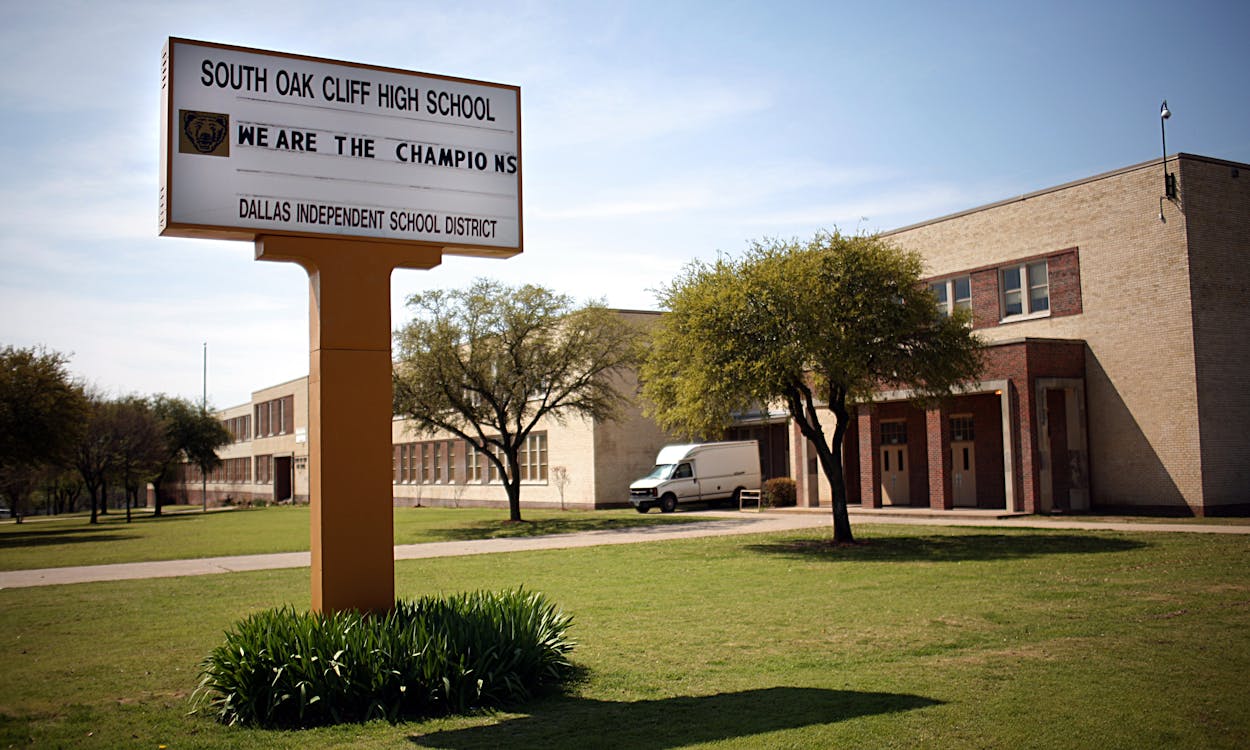Colleges have always been a safe haven for civil disobedience. The right to protest has recently surfaced on a national scale at Yale, the University of Missouri, and the University of Arizona as a surging number students stage protests. High school, on the other hand, isn’t the most likely stage to express umbrage with social or political matters through organized action. This is understandable—battling raging hormones is already a hostile war.
But on Monday afternoon, about 250 students at South Oak Cliff High School in Dallas staged a walk out to protest their school’s crumbling conditions. David Johnson, one of the protest organizers and the quarterback of the football team, painted a grim picture in a statement sent to media on Sunday ahead of the protest.
The purpose of our assembling is to expose to our school board and city of Dallas, the horrible conditions of South Oak Cliff Where we attend. The building leaks… the building is cold and damp… parts of the building have classrooms with unbearable heat because the temperature cannot be regulated. Students have to be instructed in hallways instead of regular classrooms. Students have taken ill because of the temperature extremes. When it rains, the roof leaks terribly… the hallways are riddled with buckets.
The roofs and air conditioning will get fixed, it’s just a matter of when. Last month voters passed a $1.6 billion bond program that will fund a number of improvements across DISD including new classrooms, schools, and improvements to various recreational facilities. A $13 million slice of the bond will go to South Oak Cliff High School with construction set to begin next summer. But the students want it now.
The evening after the protest, DISD Superintendent Michael Hinojosa said at a pre-scheduled community meeting that these issues are a “short-term pain for long-term gain.” He told South Oak Cliff parents and others, “That doesn’t make it any better. It’s impacting your learning; we don’t make excuses for that. However, work with us. We’re confident we can address this issue.”
But the problem goes beyond HVAC woes. Outside of leaky roofs, unbearably hot or cold classrooms, and gas leaks, students have also expressed disappointment with teachers quitting in the middle of the year. According to the Dallas Morning News, South Oak Cliff retained two-thirds of its teachers last year.
Elsewhere in Dallas, the same day the DISD bond was approved, Highland Park ISD narrowly passed a $361.4 million bond. The largest bond in the district’s history—which will fund the construction of a new elementary school, new buildings, and renovations at existing campuses—was the subject of some derision. Passing the bond would mean adding much-needed real estate to the overcrowded district, but it would also open up the opportunity for Section 8 housing to move in. Highland Park residents allegedly sent emails expressing disapproval of the bond, fearing that it would bring low-income housing projects, crime, and Middle Eastern refugees to the district.
Since Highland Park is technically its own town—a wealthy island unto itself, built and constructed as a “refuge from an increasingly diverse city”—its school district is vastly different from DISD. The bond, which comes in way below DISD’s $1.6 billion, also only covers seven schools (plus the construction of a new one) compared to the whopping 200+ schools in DISD.
Highland Park High School is 89 percent white, 9.3 percent of its students are at risk of dropping out, and none of its students are economically disadvantaged. South Oak Cliff, on the other hand, has four white students, 84 percent of its students are at risk, and 83.8 percent are economically disadvantaged. As a whole, 68.4 percent of DISD’s students are at risk, and 85.9 are economically disadvantaged. Only 10 percent of Highland Park ISD’s students are at risk and none are economically disadvantaged.
Such is the flaw of a system that allows enclaves to erect public schools that only students with a certain net worth can access. South Oak Cliff High is less than fifteen miles from its Highland Park counterpart. One is incredibly underfunded and falling apart, and the other is easily one of the best public school in America, with families buying million dollar homes just so their kids can get a halfway decent education. In this tale of two school districts, it’s the best of schools and the worst of schools.






